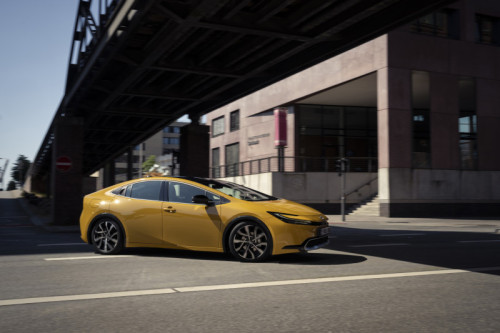Sign up for daily news updates from CleanTechnica on email. Or follow us on Google News!
It’s pretty well known that the Nissan LEAF’s days are numbered. At one point, it was an innovative and groundbreaking electric vehicle, beating Tesla to market in a key vehicle class at a much lower price. But, a number of stumbles over the years has limited the vehicle’s success. Now, it’s facing a charging infrastructure dead-end.
But, Nissan says that next year’s LEAF will at least be eligible for a partial tax credit in the United States. While this is certainly going to be good for sales of the vehicle, it’s kind of like giving a dying patient a shot of adrenaline.
The LEAF Stumbled From 2010 to 2023
Before I get into this latest attempt to keep the LEAF going just a little longer, let’s talk about the good and the bad the vehicle has seen during its existence.
The great thing about the 2011 LEAF (a model year I’ve personally owned) is that it helped launch the modern EV revolution. In 2010, Tesla had only sold Roadsters, and while fun, a two-seater car is a rather limited market to run, in that doesn’t put much pressure on mainstream manufacturers. So, Tesla took its hard-earned EV know-how and decided to aim for a sedan. But, it would be another year or two before the Model S would get to market.
Nissan beat Tesla to the punch, and hit the company below the belt on pricing. The early Model S prices are much of the reason why EV haters called EVs “toys for the rich,” with prices that many people (most) couldn’t afford. While the LEAF was still expensive in the upper $30,000s, it was not only a lot more affordable, but hit the four-door family market well over a year ahead of Tesla.
But, the low price involved some serious compromises. Instead of a battery pack that could take the car over 200 miles, it was EPA-rated at under 100. So, it was definitely a useful local commuter car, but it wasn’t useful at all for road trips or even longer regional drives in most places. EV fanatics still took copies of the vehicle all over the country and all over the world, but this involved overnight stays at RV parks and begging strangers to let you use their electrical outlet in many cases.
While Tesla improved its offerings and built out the early Supercharger network, the first Nissan LEAFs ran into trouble. The LEAF didn’t come with a liquid cooling system to keep the battery in a good temperature range. In Japan and in other humid and/or mild climates, this wasn’t a big problem, but in places like Phoenix and El Paso, the battery packs lost range in a big hurry. In just a year or two, many packs had to be replaced, and many more LEAFs managed to get just over the line of warranty coverage before degrading too far to be useful.
Instead of upgrading the vehicles and cooling the battery packs off, Nissan doubled down on the idea with a different “lizard” battery chemistry. This slowed the rate of degradation down for newer 24 kWh packs and warranty replacements, but degradation was still a lot higher in warm environments than other EVs with liquid cooling. 30 kWh LEAFs (the last couple of model years for the first generation) had an issue where Nissan claims the battery packs were falsely reporting degradation, but buyers were skeptical.
The second generation of the car (2018+, I also owned one of these) had an opportunity to do better. With larger 40 kWh packs, and later some 62 kWh packs, range was a lot better. But, there was still no liquid cooling. Admittedly, degradation wasn’t as bad for the cars as previous LEAFs, but a new “Rapidgate” problem popped up, with the vehicle’s DC fast charging going a lot slower than previous LEAFs (presumably to protect the battery pack). So, the increased range still left the vehicle unable to be very useful for long road trips. A software update was supposed to fix the problem, but I noticed very little difference on mine.
The final thing the LEAF stumbled over wasn’t really Nissan’s fault. After the Dieselgate scandal, Volkswagen had to build a charging network that covered key interstates for all cars. But, they were only required to have one CHAdeMO port per station. Limited availability, combined with the station outages Electrify America has become known for, crippled travel for CHAdeMO vehicles compared to CCS. Having two of four stations down is an inconvenience in a Chevy Bolt or VW ID.4, but it’s a trip-ender in a LEAF when the lone plug for it is dead.
The Infrastructure Bill, along with many other federal and state EV infrastructure programs, abandoned CHAdeMO. So, many new charging stations are CCS-only, leaving the LEAF with slower growth in charging stations.
The final nail in the charging coffin for the LEAF was (and will be) the rise of Tesla’s NACS standard. Now, when a company wants to put a station in with two plugs, they’ve got three types of plug to choose from. They can put in two NACS plugs, two CCS plugs, or a CCS and a NACS (this combination would serve the most customers). We’re about to see at least one major charging network (can’t name them yet due to an embargo) announce that they’re going to replace a lot of CHAdeMO plugs with NACS plugs, so the number of CHAdeMO plugs is going to start going down instead of up.
A Day Late, & Half A Buck Short
A recent Nissan press release says that the 2024 (and maybe 2025?) LEAF’s battery pack comes from materials that fit the requirements for half of the U.S. federal tax credit, which become a point of sale rebate starting in January. This is going to lower the out-the-door price by around $3,750 (assuming the local Nissan dealer doesn’t con you out of it).
This is certainly going to increase LEAF sales, but I can’t in good conscience recommend buying one. The batteries degrade faster than other comparable EVs, like the Chevy Bolt and EUV. They’re not going to be able to go on road trips, and there’s no adapter coming to save the day like there will be for CCS vehicles.
If you love Nissan, I’d recommend looking at the liquid-cooled CCS Ariya (they’re going to switch to NACS and provide an adapter, too). The Ariya has even proven itself in record hot weather under a substantial load, so it’s a much safer bet.
Featured image provided by Nissan.
Have a tip for CleanTechnica? Want to advertise? Want to suggest a guest for our CleanTech Talk podcast? Contact us here.
EV Obsession Daily!
I don’t like paywalls. You don’t like paywalls. Who likes paywalls? Here at CleanTechnica, we implemented a limited paywall for a while, but it always felt wrong — and it was always tough to decide what we should put behind there. In theory, your most exclusive and best content goes behind a paywall. But then fewer people read it!! So, we’ve decided to completely nix paywalls here at CleanTechnica. But…
Thank you!
Tesla Sales in 2023, 2024, and 2030
CleanTechnica uses affiliate links. See our policy here.




